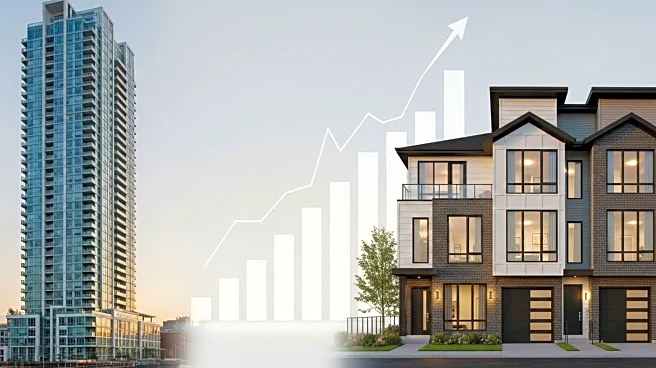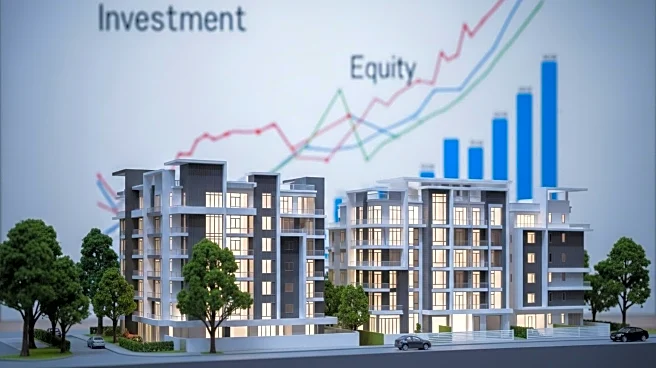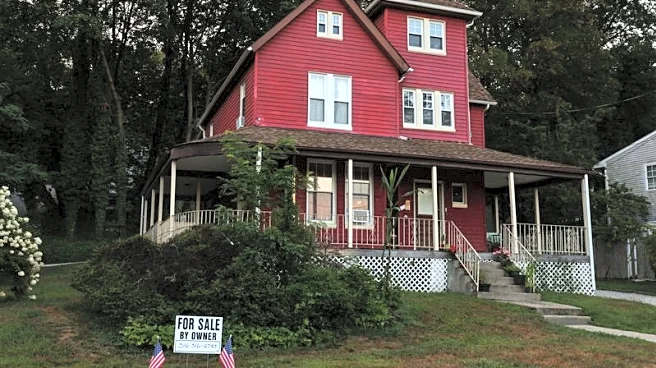What's Happening?
The cost of home ownership in the United States has significantly increased since the Covid-19 pandemic, with the median home price rising from $321,000 in August 2020 to $413,000 in August 2025, marking a 28% increase. This surge in housing costs has been analyzed using the Home Ownership Affordability Monitor (HOAM) by the Federal Reserve Bank of Atlanta. The HOAM index evaluates the affordability for median-income households aiming to purchase a median-priced home, comparing actual median household income to the 'qualified' income needed to keep annual housing costs at or below 30%. An index score of 100 or higher indicates affordability, while a score below 100 suggests that the median income is insufficient for purchasing a median-priced home. The data reveals that most metropolitan areas, particularly in the West and Midwest, have become increasingly unaffordable for median-income households.
Why It's Important?
The rising unaffordability of homes in many U.S. metropolitan areas has significant implications for economic stability and social equity. As housing costs outpace income growth, more families may struggle to achieve home ownership, a key component of financial security and wealth building. This trend could exacerbate economic disparities and limit upward mobility for middle and lower-income households. Additionally, the housing market's strain could impact related industries, such as construction and real estate, potentially slowing economic growth. Policymakers and stakeholders may need to address these affordability challenges to ensure sustainable economic development and social cohesion.
What's Next?
As the Federal Reserve Bank of Atlanta continues to update the HOAM index, stakeholders, including policymakers, real estate professionals, and potential homebuyers, will closely monitor these trends. Potential responses could include policy interventions aimed at increasing housing supply, adjusting zoning laws, or providing financial assistance to first-time homebuyers. The ongoing analysis of affordability data will be crucial in shaping future housing policies and addressing the needs of affected communities.
Beyond the Headlines
The affordability crisis in the housing market may also have cultural and demographic implications. As home ownership becomes less attainable, there could be shifts in living arrangements, with more individuals opting for renting or cohabitation. This trend might influence urban planning and the development of community infrastructure. Additionally, the pressure on housing affordability could lead to increased advocacy for rent control measures and affordable housing initiatives, potentially reshaping the political landscape in affected regions.











